Yes, there are good subsidies and poorly chosen subsidies. For those who missed this event, though, the Electric Highway is part of the West Coast Green Highway, a three-state initiative to promote the use of cleaner fuels along the 1,350 miles of I-5 from British Columbia to Baja, Californian in Mexico.
For its portion of supporting the Electric Highway, WSDOT selected Bellingham as the premiere location in a network of public electric vehicle chargers along the West Coast Electric Highway, because the city’s commitment to a sustainable future goes hand-in-hand with the WSDOT’s leading role in creating a network of electric vehicle charging along Interstate 5. When complete, the network will enable electric vehicle drivers to travel 276 miles of I-5 between Washington’s borders with Oregon and Canada.
“The transition from gasoline and foreign oil to alternative fuels, such as electricity, for transportation requires a huge first step – infrastructure,” said state Transportation Secretary Paula Hammond in recognition of Wednesday’s groundbreaking of the West Coast Electric Highway’s first DC fast charge station at Sehome Village Shopping Center in Bellingham.
“Businesses like Sehome Village and its merchants, such as Starbucks and REI, are pioneering the way to energy independence by taking that first step,” Hammond said. “And they are strengthening Washington’s role in the West Coast Electric Highway. In a few years it will be possible for people to drive their electric vehicles from Canada to Mexico.”
Bellingham Mayor Dan Pike said he was eager to join WSDOT on the Electric Highway. Under their partnership, WSDOT, together with charging station manufacturer and operator AeroVironment, developed the first public DC Fast-charging station in the state. The technology provides a 30-minute recharge for all-electric cars such as the Nissan Leaf and Mitsubishi iMiev. The charging station will include a Level 2 “medium-speed” charging pedestal to serve other electric vehicles such as the Ford Focus and Chevy Volt.
With federal Recovery Act funding through the Washington State Department of Commerce State Energy Program and local funding, the state is developing public/private ventures that support the nation’s first cross-state infrastructure for electric vehicles, paving the way for a cleaner, more sustainable way of travel.
“The city’s commitment to sustainability makes Bellingham a prime location to lead the charge to provide electric vehicle infrastructure,” Pike said. “We're proud to pave the way for a new generation of zero-emission personal transportation."
Earlier this year, WSDOT selected AeroVironment Inc. (Nasdaq: AVAV) as its business partner to provide the DC fast-charging equipment and services at retail locations such as shopping malls, fueling stations and restaurants with easy access to the state’s highways. AeroVironment is installing six stations along I-5, three stations along U.S. Highway 2 and potentially two stations along Interstate 90.
The State of Oregon also chose AeroVironment to extend the West Coast Green Highway charging network to the Oregon/California border. Read: AeroVironment chosen by Oregon DOT for Green Highway charging stations
“Today, in Bellingham, electrifying I-5 goes from being a vision about a cleaner future for Washington to the start of a new reality,” said Kristen Helsel, AeroVironment vice president of EV solutions. “Together with the Washington State Department of Transportation and cities like Bellingham, we’re powering the electric-vehicle charging network in Washington, and we look forward to quickly rolling out and lighting up the remainder of the Electric Highway in the months to come.”
TorqueNews Comment
While I like the Nissan Leaf and the Chevy Volt, I do not appreciate helping those who can afford the new technology with my tax dollars. We didn’t do this with air bags and disc brakes; and those were considered major safety items.
However, this support by WSDOT and the federal government, in my opinion, is the proper use of subsidies. In other words, any subsidy that goes beyond research and infrastructure does not fit the definition of free market. It merely favors the rich who buy BMWs and Infinitis (per comments on my past TN articles) once again, because the masses certainly cannot afford the monthly lease rate.
I say let’s keep the subsidies at research and infrastructure. Better yet, apply the effort toward a defined national energy policy. Choosing select products and technologies is not a policy, though; it’s a political ruse.
-----------------------
About the Reporter: After 39 years in the auto industry as a design engineer, Frank Sherosky now trades stocks, futures and writes articles, books and ebooks like, "Perfecting Corporate Character," "Awaken Your Speculator Mind", and "Millennial World Order" via authorfrank.com. He may be contacted here by email: [email protected]
________________________________________________
Additional Reading:
Chevy Volt vs Cruze cost comparison not appreciated by some Volt owners
GM and J.D. Power attempt to understand the why behind Chevy Cruze sales
Nissan Leaf sets new record at 2011 Pikes Peak Hill Climb
State business ranking by CNBC reflects same criteria important to auto industry
Why Obama's proposed CAFE standards to 56.2 mpg IS feasible
GM and ABB demonstrate Volt battery for re-use applications
Green and cost effective electric vehicles need Clean Coal Technology
Japanese explorers discover rare earth materials in Pacific ocean mud







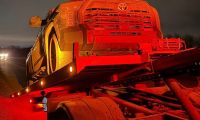
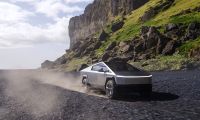
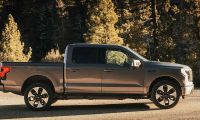
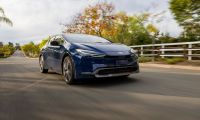
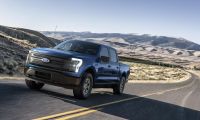
Comments
I thought for sure someone
Permalink
I thought for sure someone would nail me for this one!